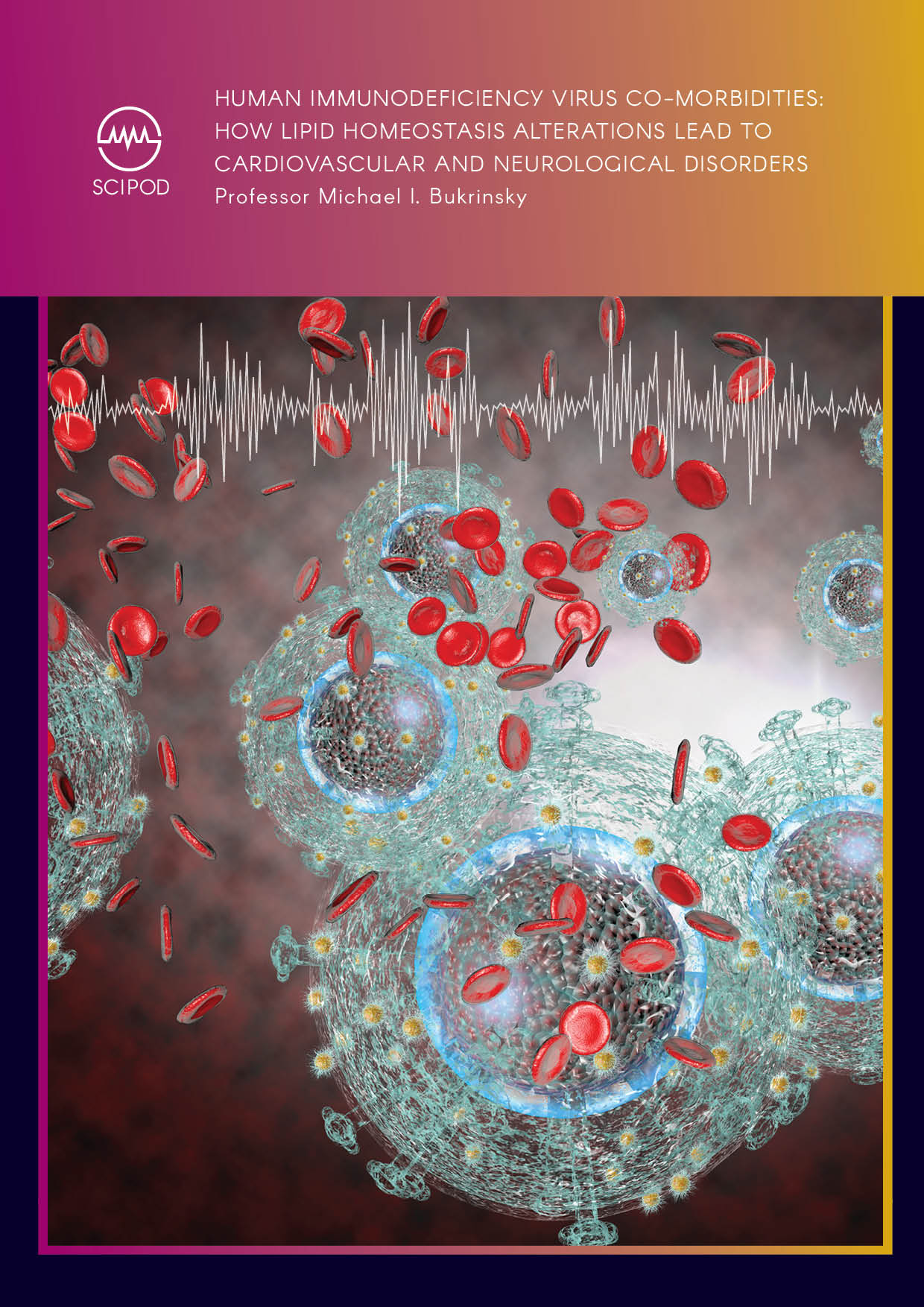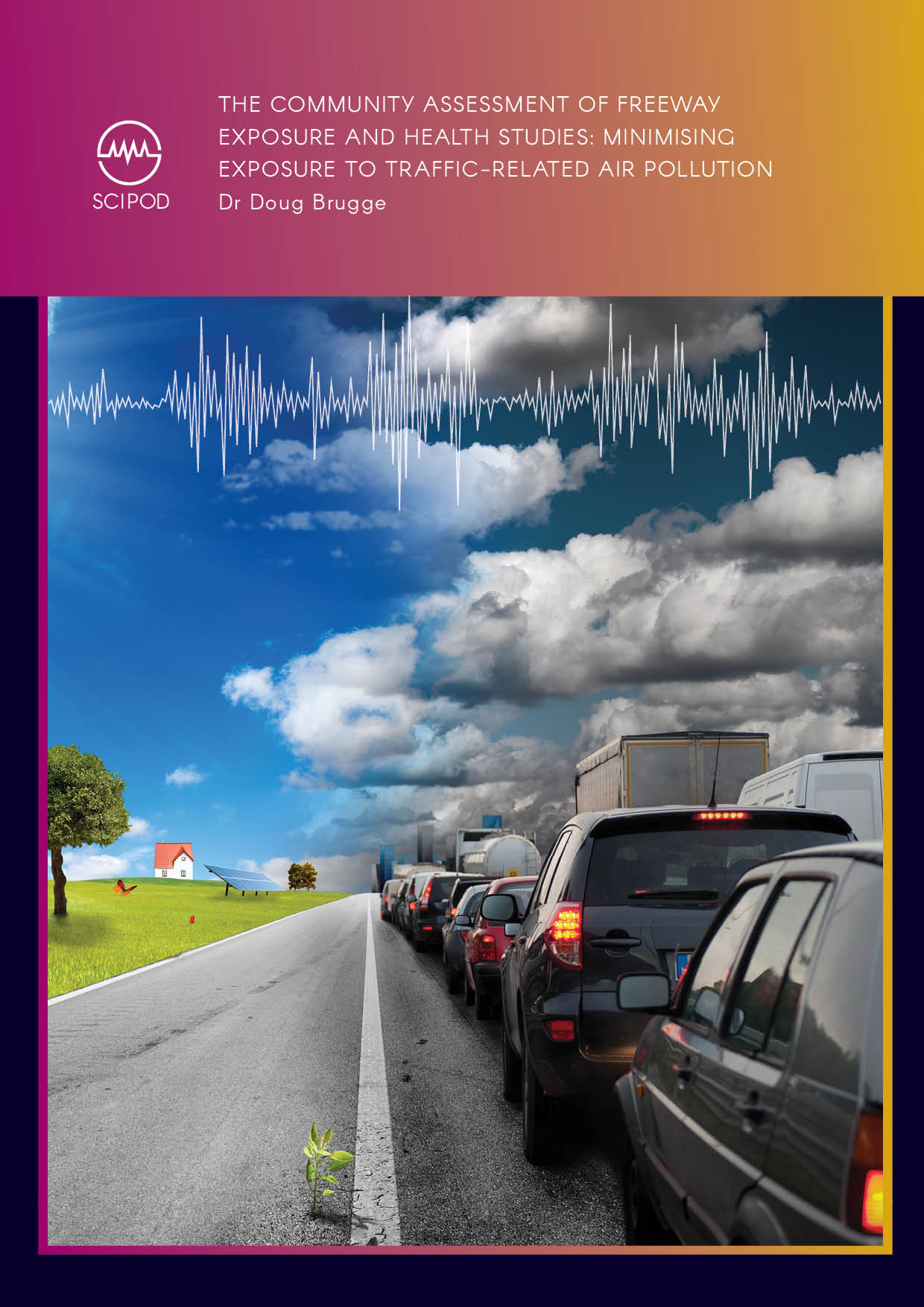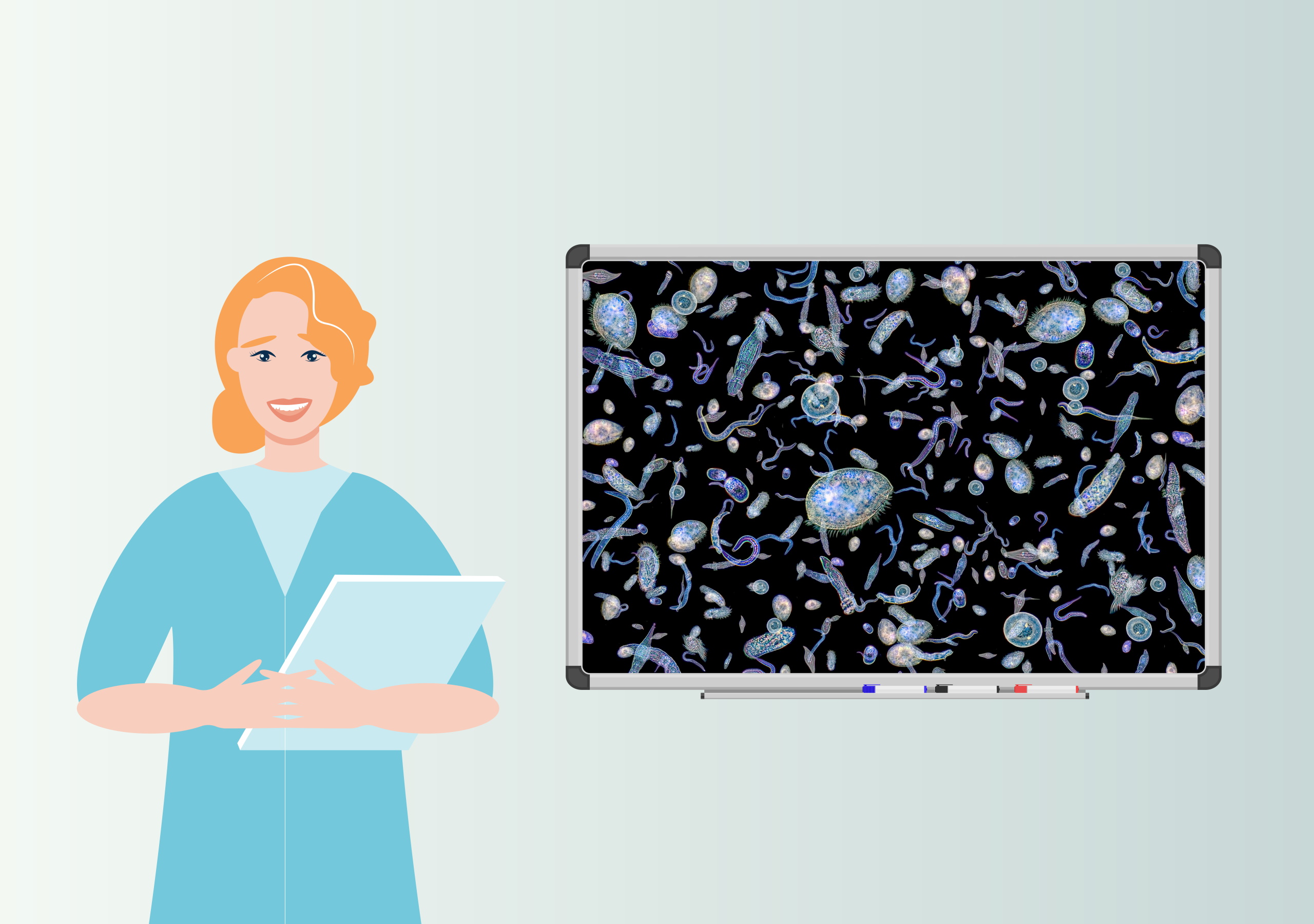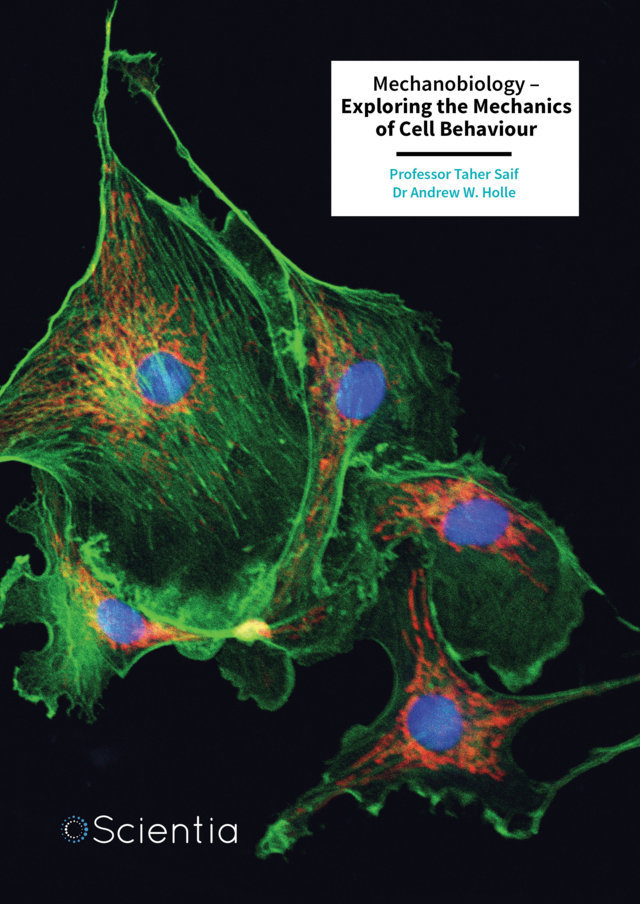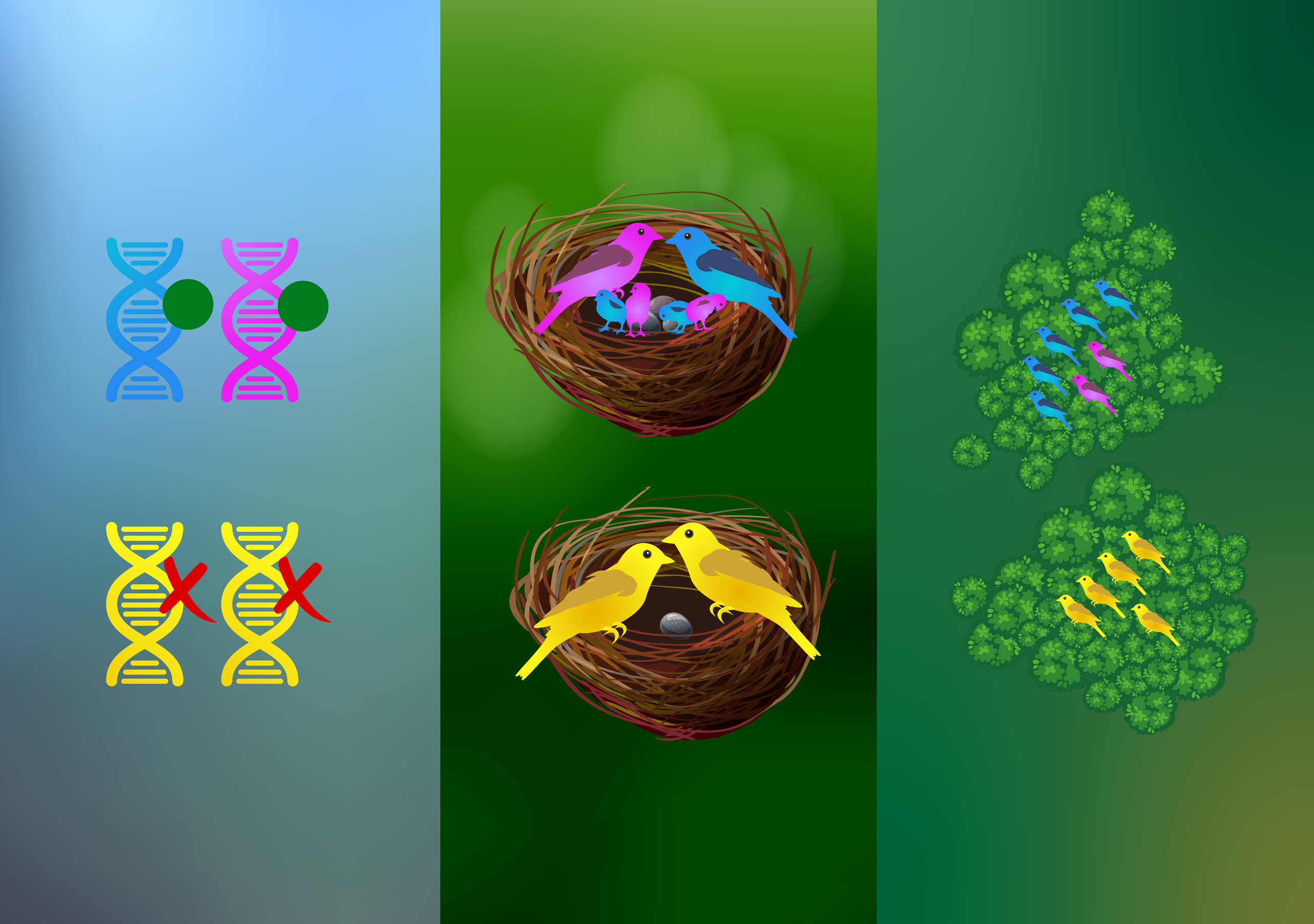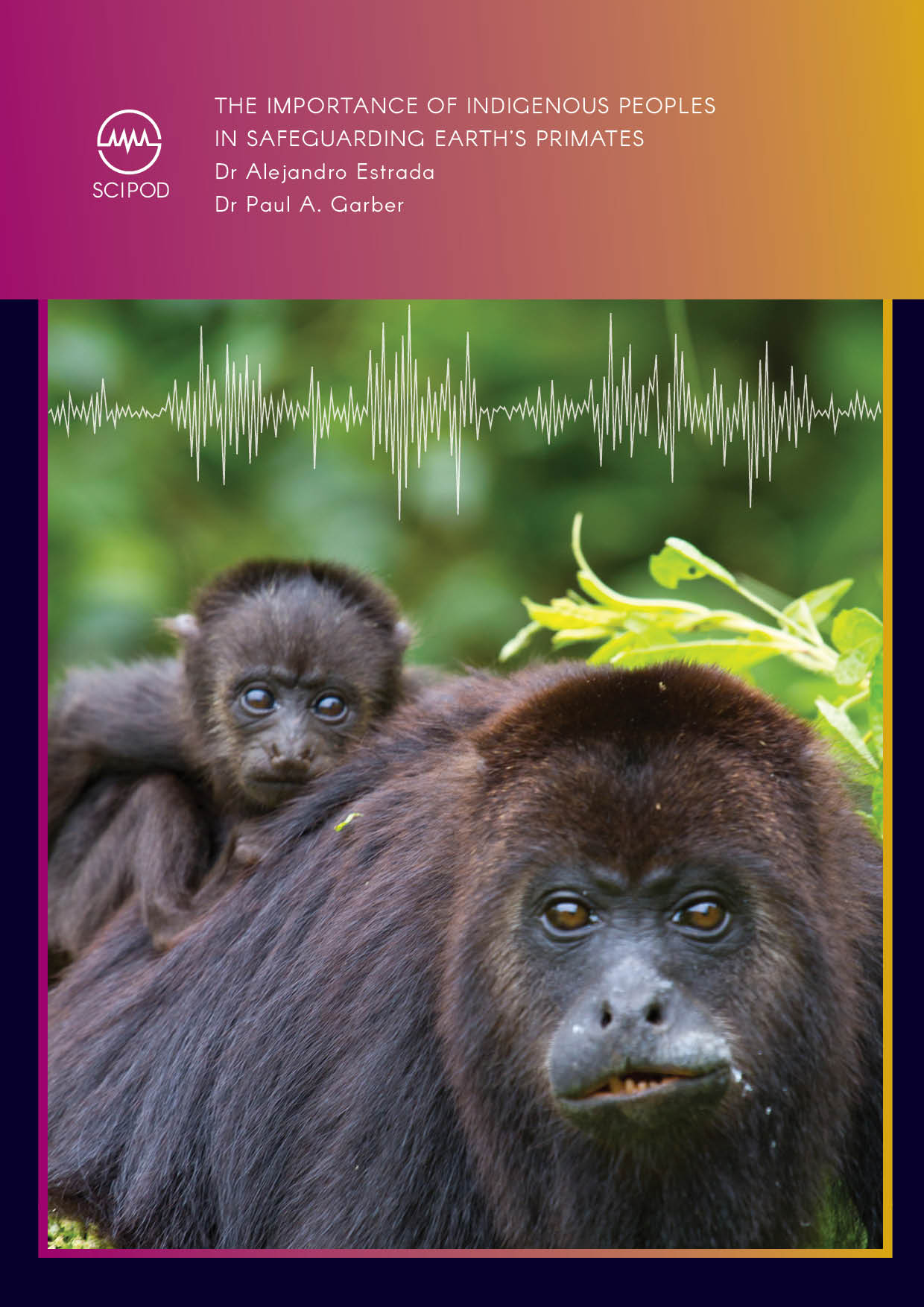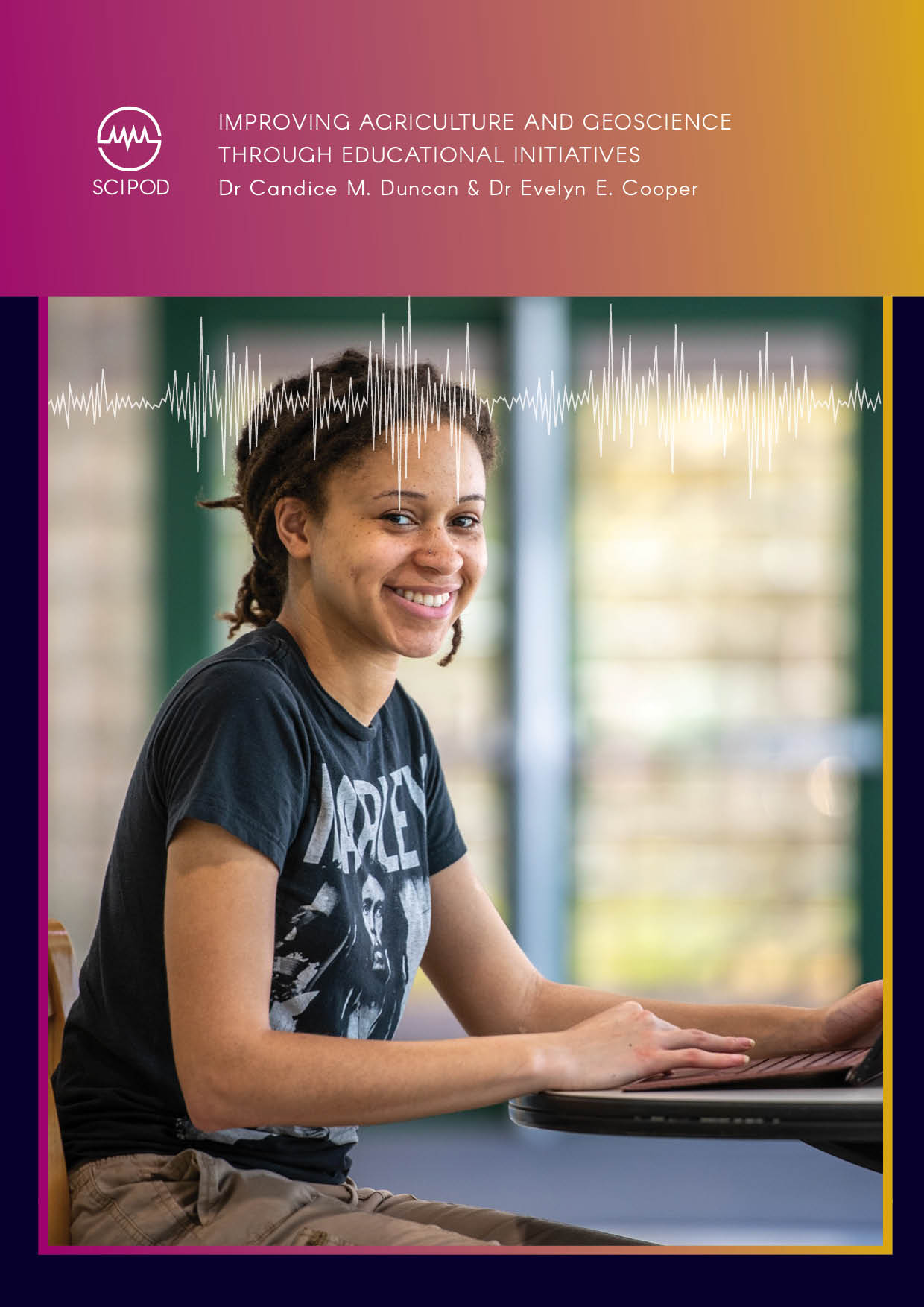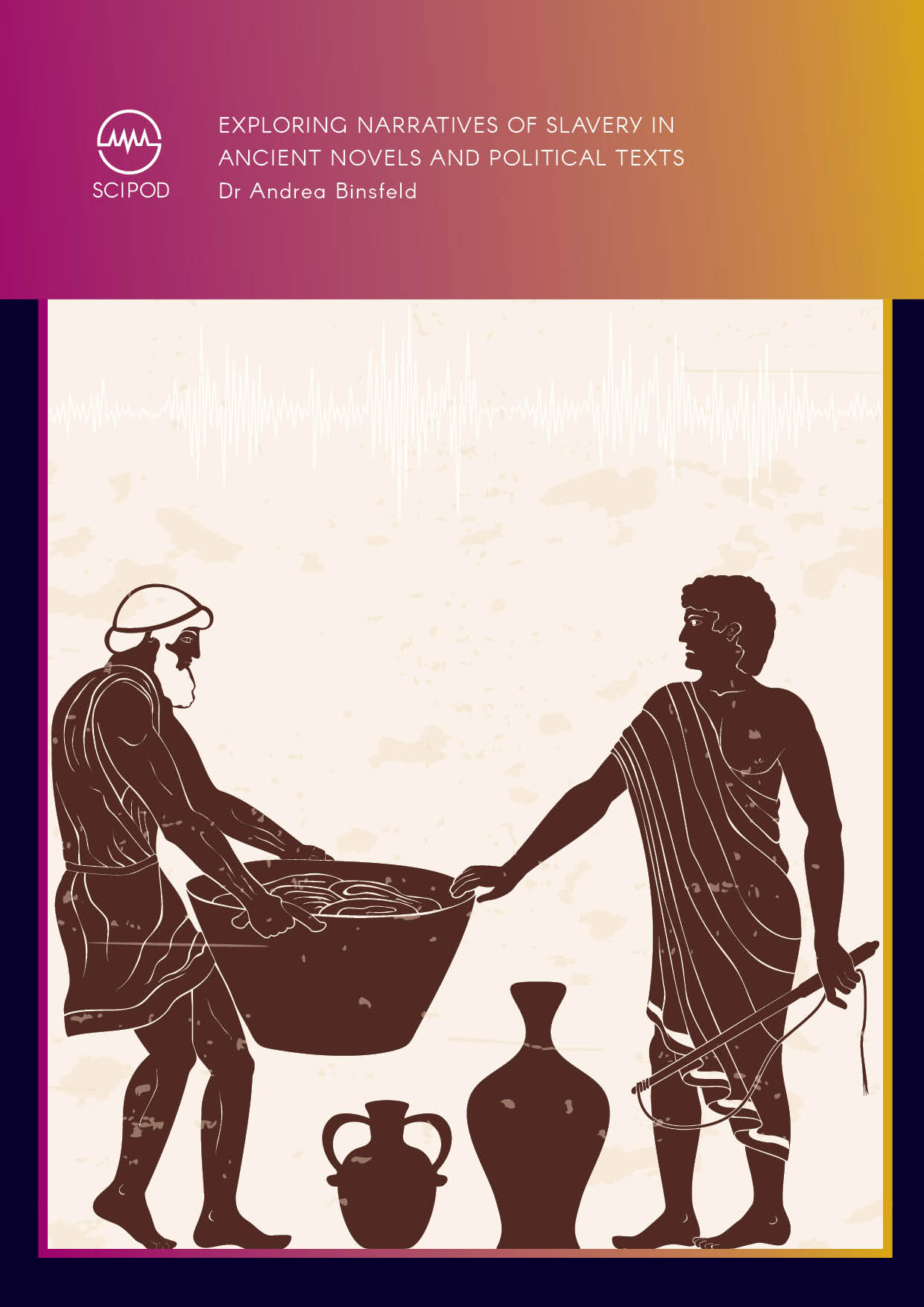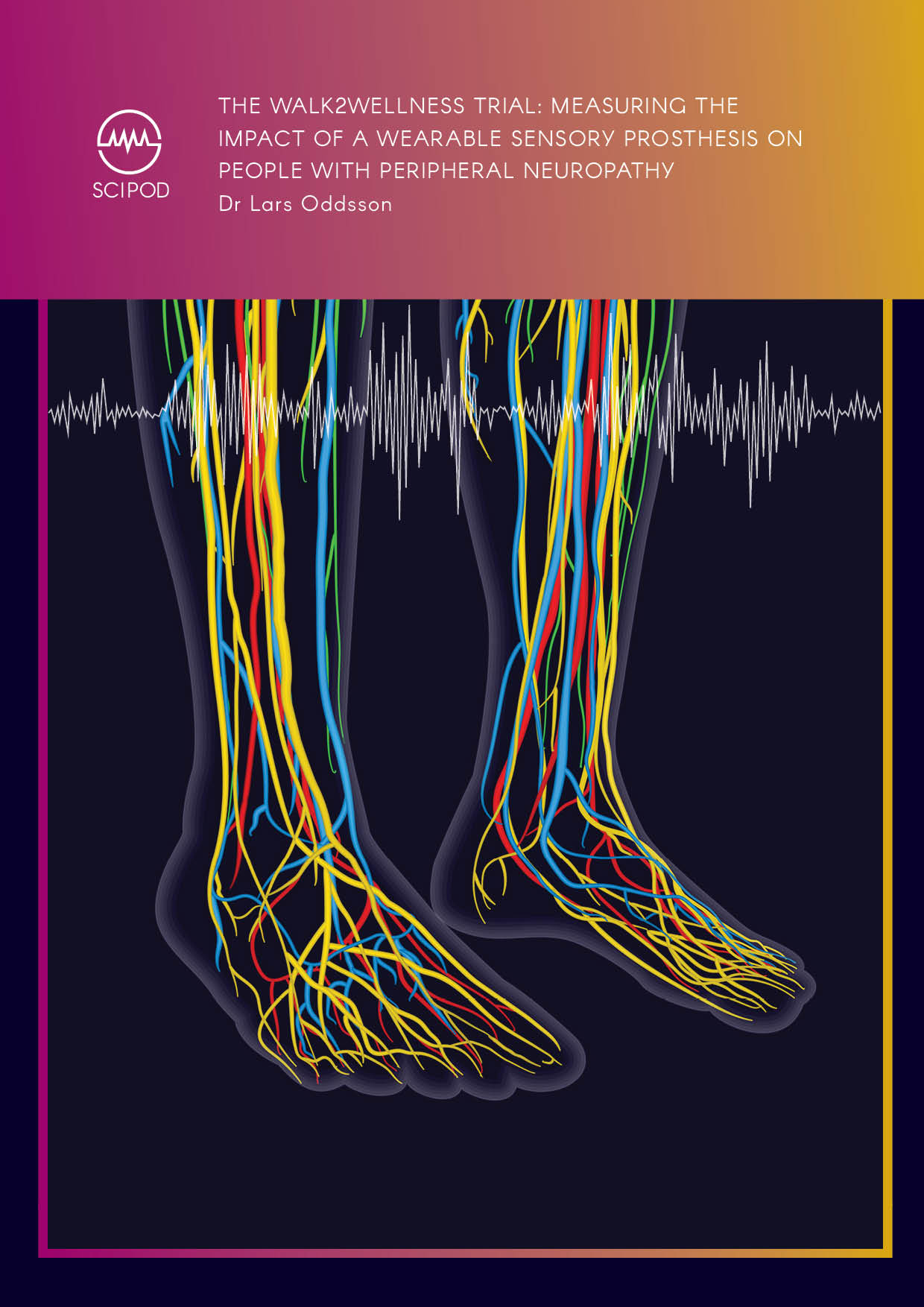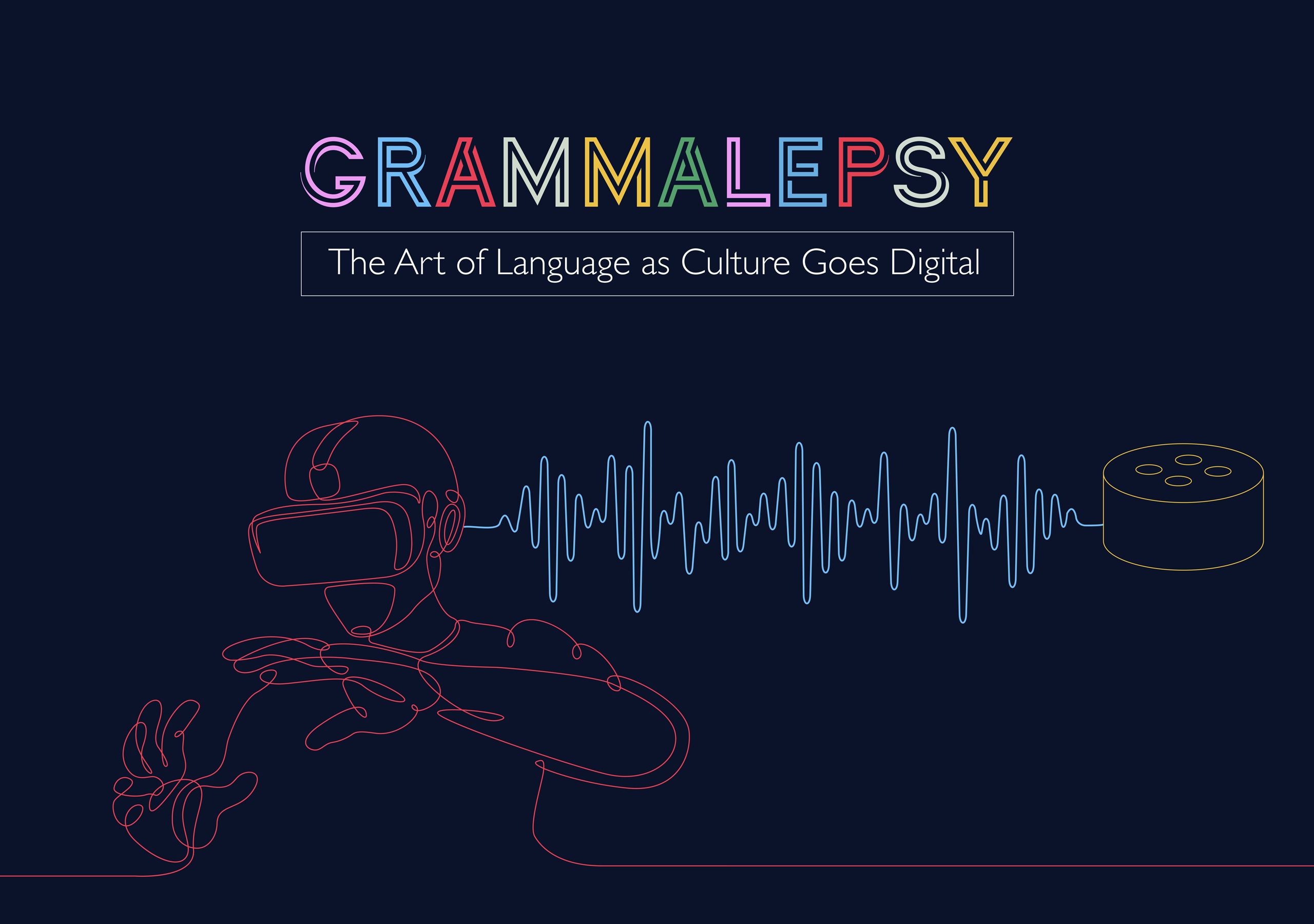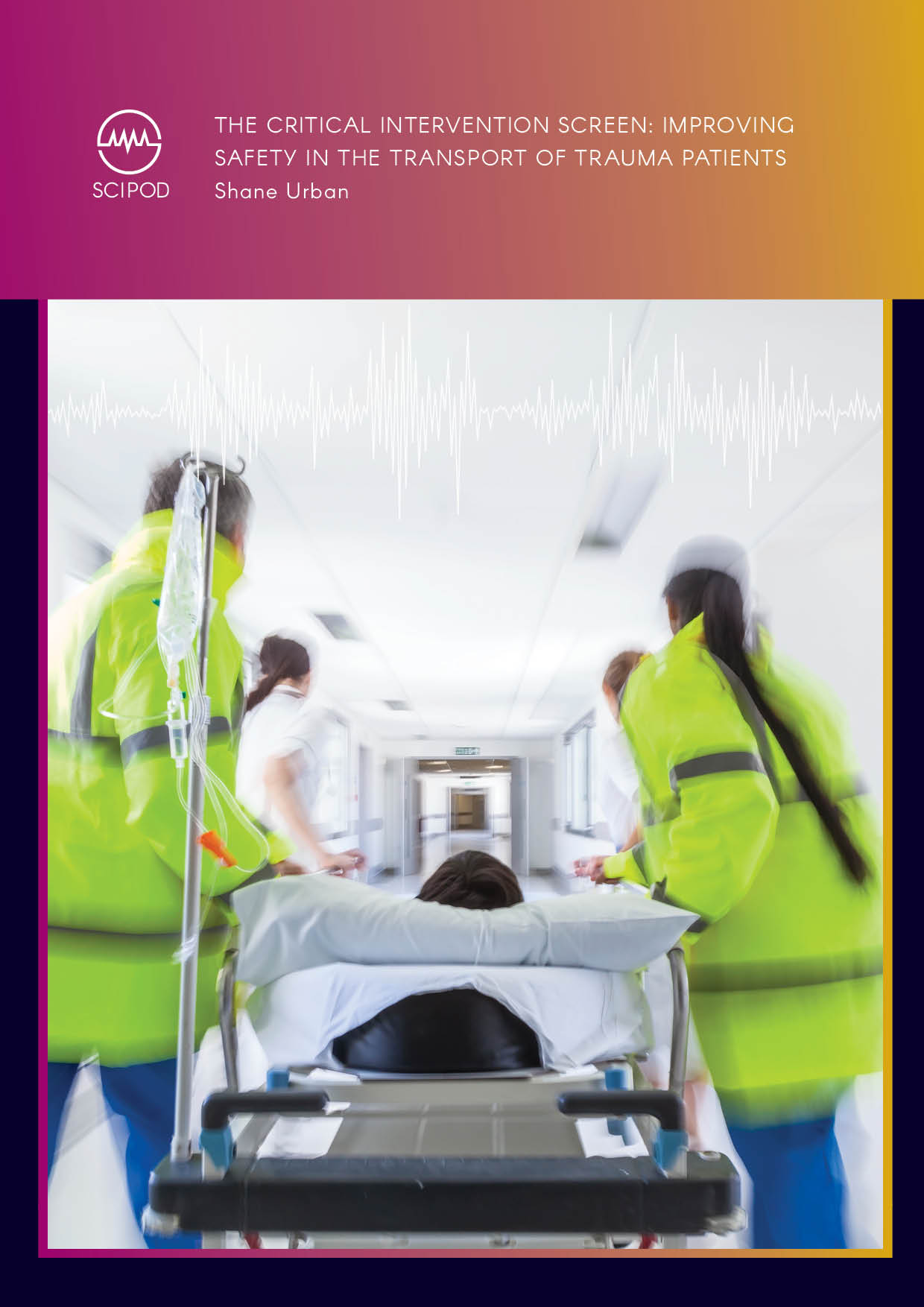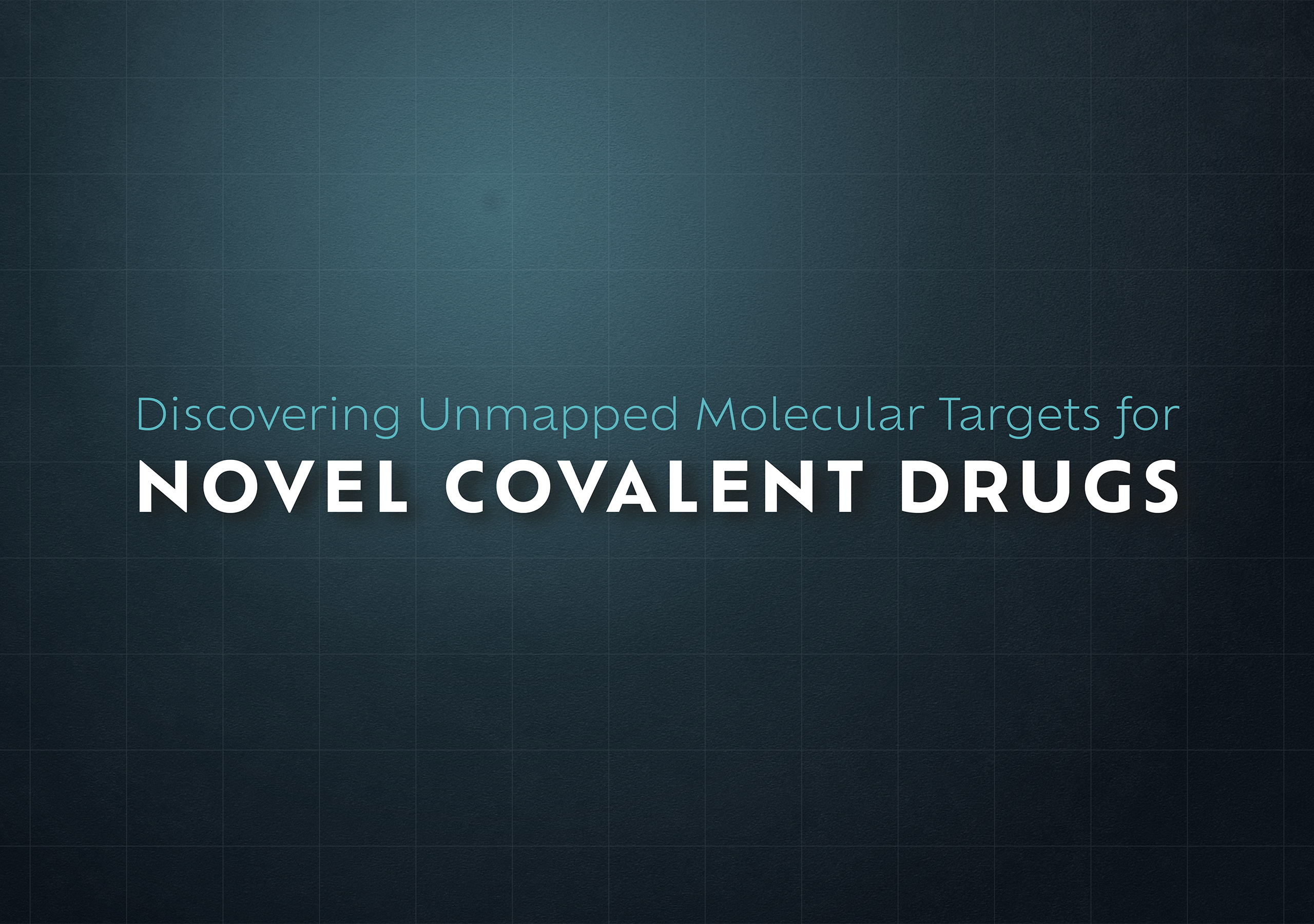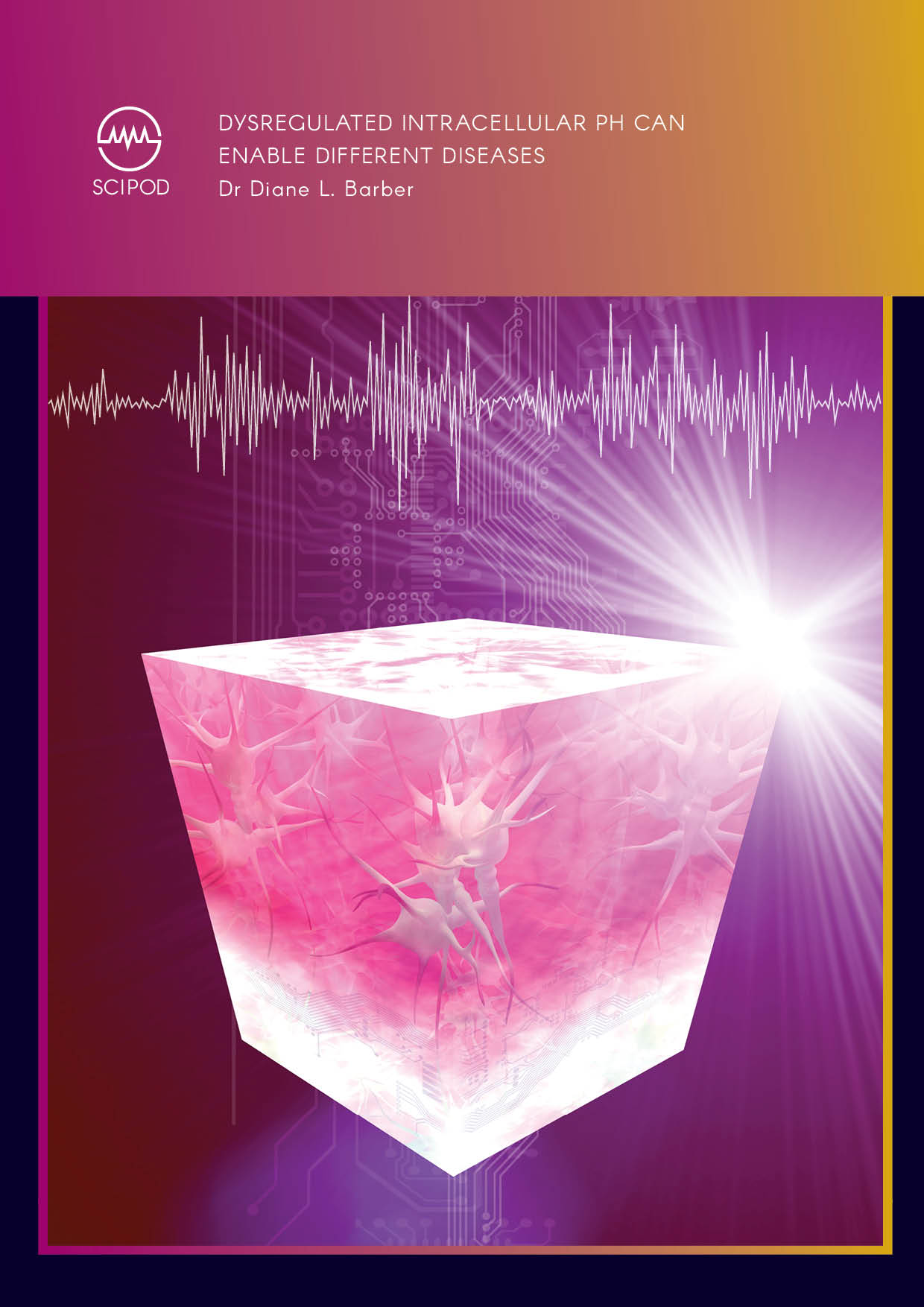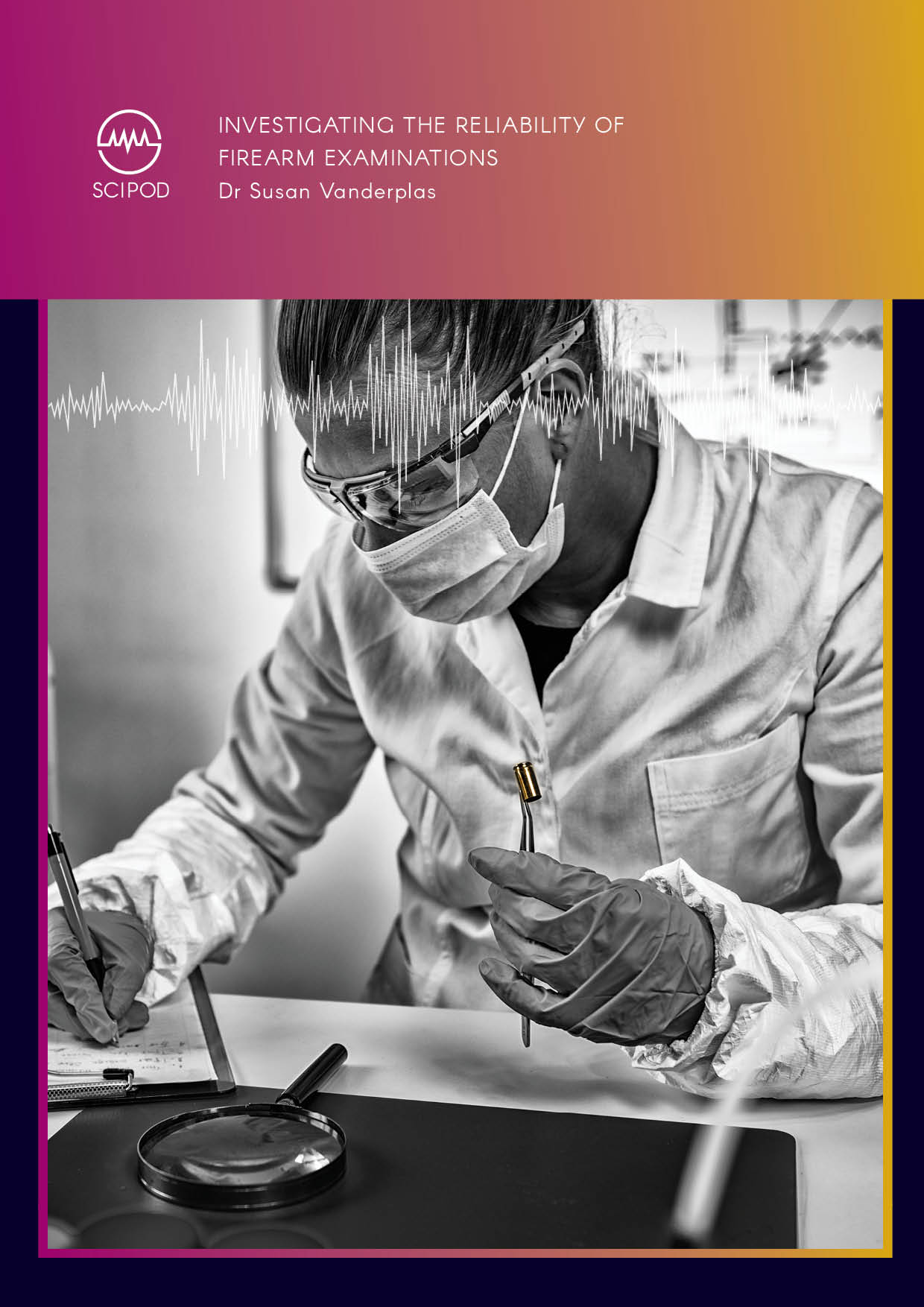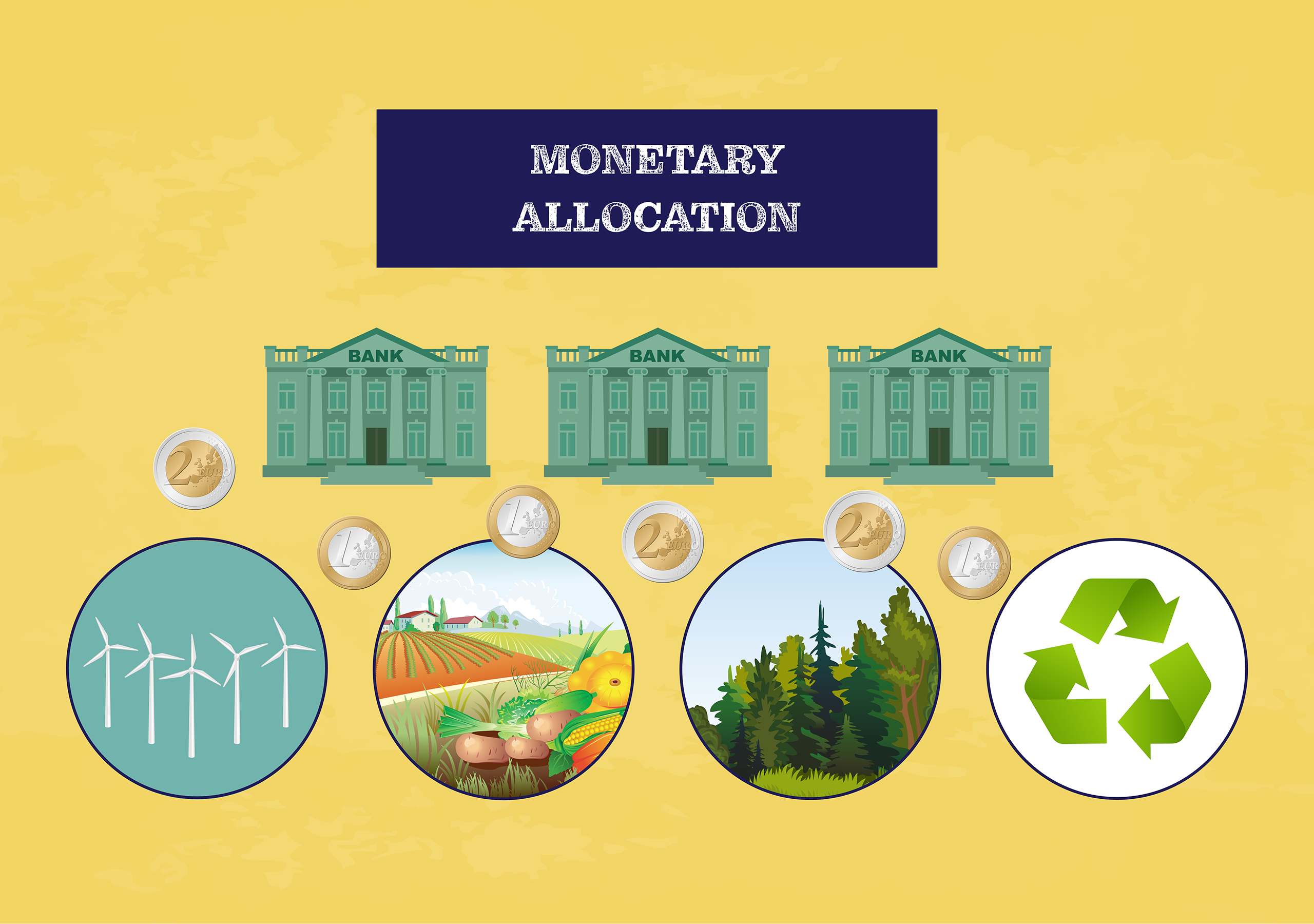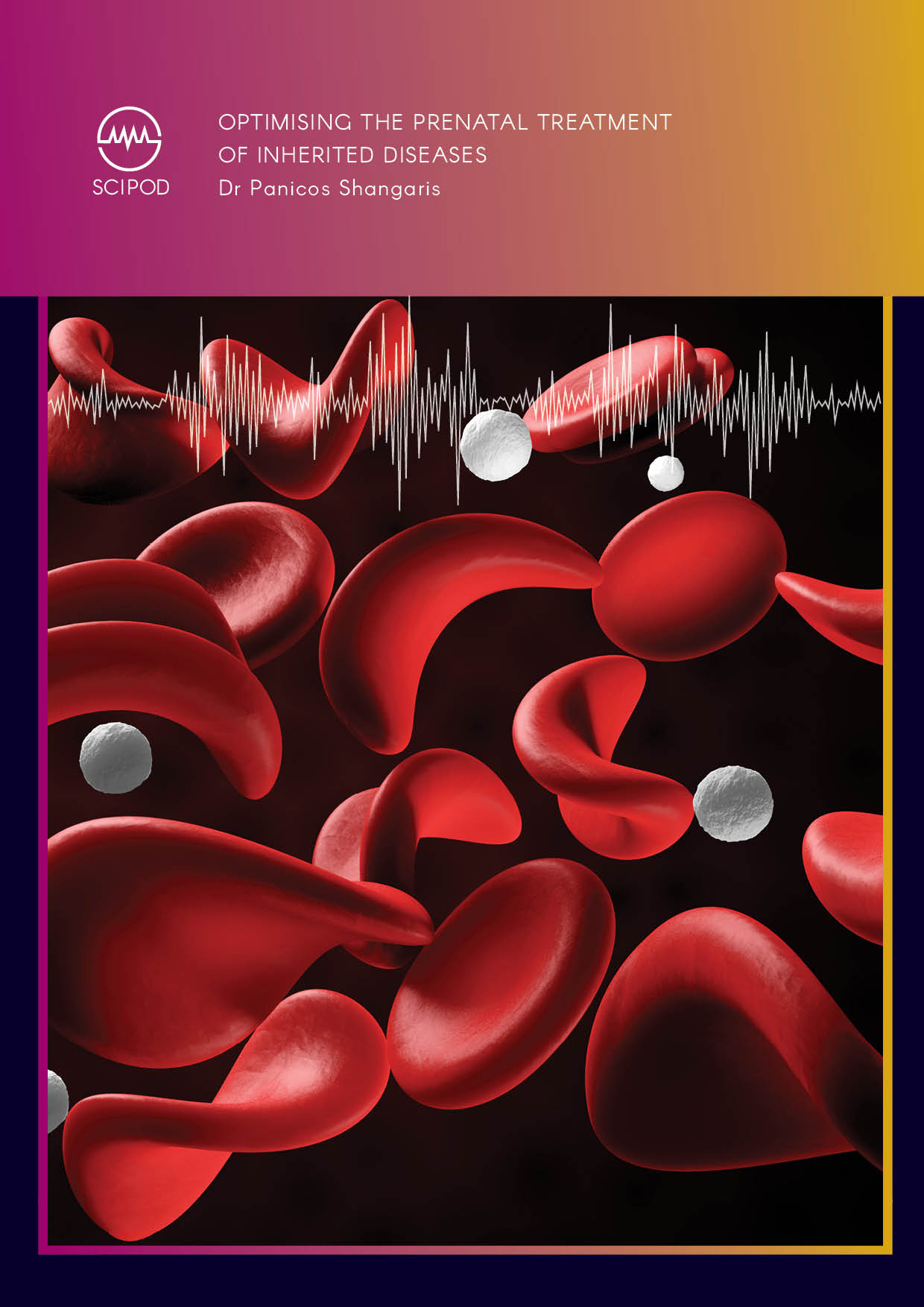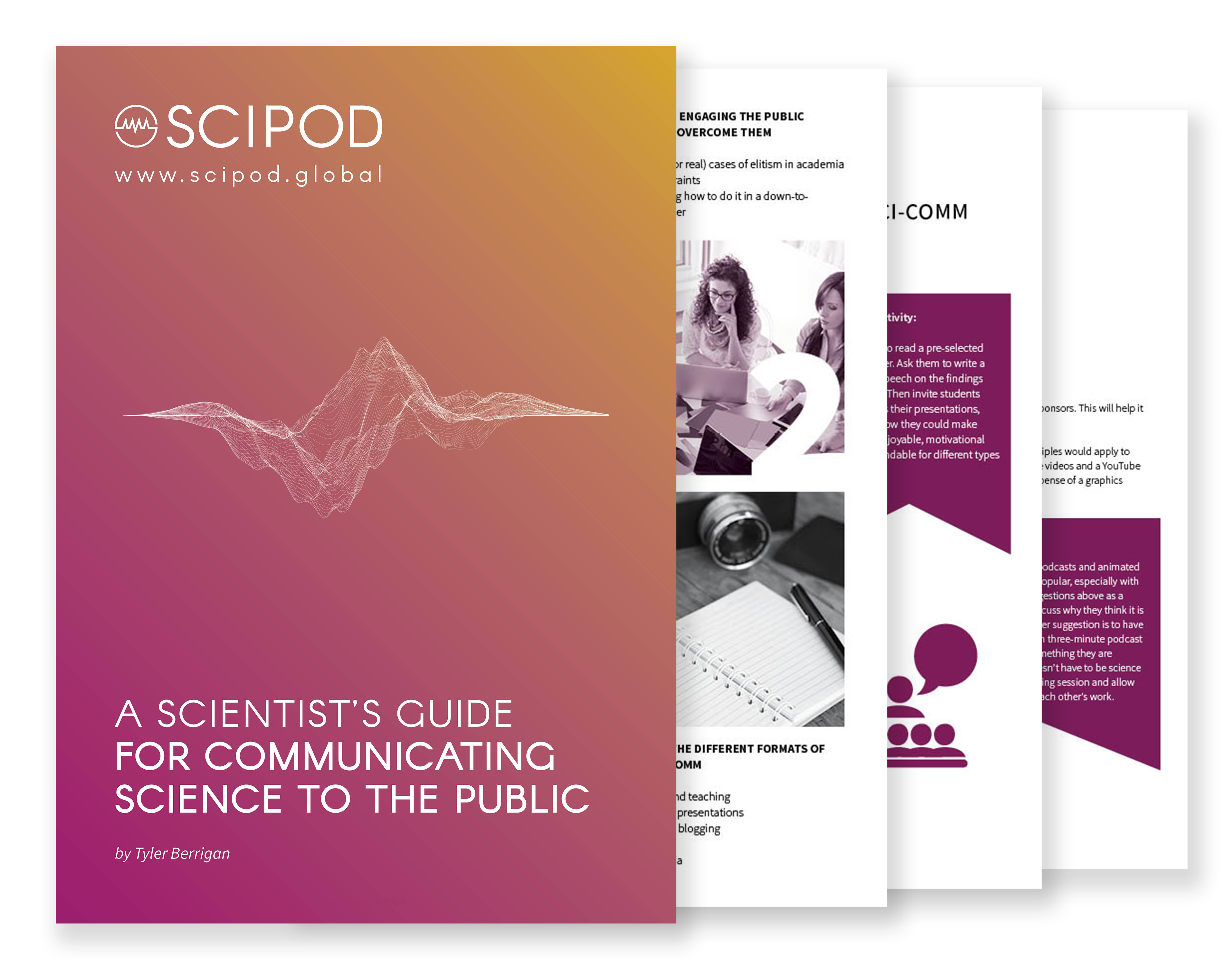Welcome to SciComm Radio
An exclusive interview series with leading scientists and science communicators

Click Below To Listen To A SciPod Radio Episode
Professor Michael Bukrinsky | Human Immunodeficiency Virus Co-morbidities: How Lipid Homeostasis Alterations Lead to Cardiovascular and Neurological Disorders
AudioPod
About this episode
Although human immunodeficiency virus (HIV) is still prevalent worldwide, life-saving antiretroviral drugs can now prevent an infection from progressing into acquired immunodeficiency syndrome (AIDS). Nevertheless, people who are HIV-positive are still at increased risk of developing neurological disorders and cardiovascular diseases, known as co-morbidities. Professor Michael Bukrinsky from the George Washington University in Washington DC works to understand the underlying biological mechanisms that lead to these disorders. His research has produced interesting results that demonstrate the role of altered lipid (cholesterol) homeostasis in HIV-infected cells and how this comes to pass.
Original Article Reference
This SciPod is a summary of https://doi.org/10.33548/SCIENTIA836
This work is licensed under a Creative Commons Attribution 4.0 International License. 
What does this mean?
Share: You can copy and redistribute the material in any medium or format
Adapt: You can change, and build upon the material for any purpose, even commercially.
Credit: You must give appropriate credit, provide a link to the license, and indicate if changes were made.
Increase the impact of your research!
More episodes
Dr Doug Brugge | The Community Assessment of Freeway Exposure and Health Studies: Minimising Exposure to Traffic-related Air Pollution
AudioPod
About this episode
People who live close to busy roads and highways are exposed to high levels of traffic-related air pollution. This puts them at risk of significant health difficulties such as high blood pressure, heart attacks and cancer. The Community Assessment of Freeway Exposure and Health Studies led by Dr Doug Brugge from the University of Connecticut represent community-engaged research into the biological impact of high exposure to pollution and importantly, possible solutions to this. This work has shown that high-efficiency particulate arrestance filters are one promising intervention for minimising exposure to pollution and thus improving health.
Original Article Reference
This SciPod is a summary of https://doi.org/10.33548/SCIENTIA837
This work is licensed under a Creative Commons Attribution 4.0 International License. 
What does this mean?
Share: You can copy and redistribute the material in any medium or format
Adapt: You can change, and build upon the material for any purpose, even commercially.
Credit: You must give appropriate credit, provide a link to the license, and indicate if changes were made.
Increase the impact of your research!
More episodes
Professor Valerii Vinokur – Professor Anna Razumnaya – Professor Igor Lukyanchuk | Reinventing the Capacitor
VideoPod
About this episode

What does this mean?
Share: You can copy and redistribute the material in any medium or format
Adapt: You can change, and build upon the material for any purpose, even commercially.
Credit: You must give appropriate credit, provide a link to the license, and indicate if changes were made.
Increase the impact of your research!
More episodes
Dr Alexandra (Sasha) Pavlova – Professor Paul Sunnucks | Genetic Rescue Saves Species from Extinction
VideoPod
About this episode
When a species’ habitat shrinks, its populations decline. Individuals that persist in remaining islands of habitat have no choice but to breed with their relatives, reducing the health and fertility of their offspring. Researchers at Monash University seek to increase genetic diversity in small populations, helping them rebound. They have established ‘genetic rescue’ methods to save many endangered species from extinction, collaborating with wildlife agencies to test solutions.

What does this mean?
Share: You can copy and redistribute the material in any medium or format
Adapt: You can change, and build upon the material for any purpose, even commercially.
Credit: You must give appropriate credit, provide a link to the license, and indicate if changes were made.
Increase the impact of your research!
More episodes
Professor Eckehard Schöll | Moritz Gerster – Rewiring the Brain: How a Small-world Network Structure Mimics Spontaneous Synchronisation in Epileptic Seizures
AudioPod
About this episode
Original Article Reference
This SciPod is a summary of the paper ‘FitzHugh–Nagumo oscillators on complex networks mimic epileptic-seizure-related synchronization phenomena’, by Moritz Gerster, Rico Berner, Jakub Sawicki, Anna Zakharova, Antonín Škoch, Jaroslav Hlinka, Klaus Lehnertz and Eckehard Schöll, published in Chaos 30, 123130 (2020), https://doi.org/10.1063/5.0021420.
This work is licensed under a Creative Commons Attribution 4.0 International License. 
What does this mean?
Share: You can copy and redistribute the material in any medium or format
Adapt: You can change, and build upon the material for any purpose, even commercially.
Credit: You must give appropriate credit, provide a link to the license, and indicate if changes were made.
Increase the impact of your research!
More episodes
Dr Alejandro Estrada and Dr Paul A. Garber | The Importance of Indigenous Peoples in Safeguarding Earth’s Primates
AudioPod
About this episode
Original Article Reference
This SciPod is a summary of the paper ‘Global importance of indigenous peoples, their lands, and knowledge systems for saving the world’s primates from extinction’ in Science Advances, 2022. https://doi.org/10.1126/sciadv.abn2927
This work is licensed under a Creative Commons Attribution 4.0 International License. 
What does this mean?
Share: You can copy and redistribute the material in any medium or format
Adapt: You can change, and build upon the material for any purpose, even commercially.
Credit: You must give appropriate credit, provide a link to the license, and indicate if changes were made.
Increase the impact of your research!
More episodes
Dr Evelyn Cooper | Dr Candice Duncan – Improving Agriculture and Geoscience through Educational Initiatives
AudioPod
About this episode
Original Article Reference
This SciPod is a summary of https://doi.org/10.33548/SCIENTIA824
This work is licensed under a Creative Commons Attribution 4.0 International License. 
What does this mean?
Share: You can copy and redistribute the material in any medium or format
Adapt: You can change, and build upon the material for any purpose, even commercially.
Credit: You must give appropriate credit, provide a link to the license, and indicate if changes were made.
Increase the impact of your research!
More episodes
Do European Citizens Accept EU and National Policies Equally?
VideoPod
About this episode
Following the global financial crisis of 2007 and 2008, a related economic emergency known as the Euro Crisis spread throughout Europe. To counter this crisis, the EU imposed a series of austerity measures in the worst-hit countries, which fuelled outrage across Europe. However, it is unclear whether citizens were more outraged about these policies because they had been implemented by EU institutions rather than national governments. Professor Sonia Alonso and Professor Ignacio Sánchez-Cuenca recently set out to understand whether the willingness of citizens to accept unpopular policies varies depending on whether they were introduced by their national governments or by EU institutions.
Original Article Reference
This SciPod is a summary of the paper ‘EU intervention vs. national autonomy: do citizens really care?’ in European Politics and Society. doi.org/10.1080/23745118.2020.1865061

What does this mean?
Share: You can copy and redistribute the material in any medium or format
Adapt: You can change, and build upon the material for any purpose, even commercially.
Credit: You must give appropriate credit, provide a link to the license, and indicate if changes were made.
Increase the impact of your research!
More episodes
Dr Francesca Ronchi | How Gut Bacteria Influences Brain Health
AudioPod
About this episode
Our intestines contain millions of bacteria, known as our microbiota, which secrete compounds and play a key role in keeping us healthy. These bacteria don’t just affect the health of our digestive system, they can influence organs as far away as the brain. Dr Francesca Ronchi at Charité Universitätsmedizin in Berlin is determining the role of the microbiota in the prevention and development of neurological disorders.
Original Article Reference
This SciPod is a summary of the papers ‘The Gut-Brain Axis: How Microbiota and Host Inflammasome Influence Brain Physiology and Pathology’, from Frontiers in Immunology, DOI https://doi.org/10.3389/fimmu.2020.604179, and ‘Experimental priming of encephalitogenic Th1/Th17 cells requires pertussis toxin-driven IL-1b production by myeloid cells’, from Nature Communications, DOI: https://doi.org/10.1038/ncomms11541
This work is licensed under a Creative Commons Attribution 4.0 International License. 
What does this mean?
Share: You can copy and redistribute the material in any medium or format
Adapt: You can change, and build upon the material for any purpose, even commercially.
Credit: You must give appropriate credit, provide a link to the license, and indicate if changes were made.
Increase the impact of your research!
More episodes
Dr Andrea Binsfeld | Exploring Narratives of Slavery in Ancient Novels and Political Texts
AudioPod
About this episode
Original Article Reference
This SciPod is a summary of the papers ‘Slavery and its narratives in ancient novels – stories of decline and fall’; and ‘Domynus and Tyrannos? Narratives of slavery in the political discourse of late antiquity’, Joseph C. Miller Memorial Lecture Series, 2021.
This work is licensed under a Creative Commons Attribution 4.0 International License. 
What does this mean?
Share: You can copy and redistribute the material in any medium or format
Adapt: You can change, and build upon the material for any purpose, even commercially.
Credit: You must give appropriate credit, provide a link to the license, and indicate if changes were made.
Increase the impact of your research!
More episodes
Dr Candice M. Duncan – Dr Evelyn E. Cooper | Improving Agriculture and Geoscience through Educational Initiatives
VideoPod
About this episode
The College of Agriculture and Natural Resources at the University of Maryland College Park provides exciting student experiences through three innovative programs: AgDiscovery, Summer Opportunities in Agricultural Research and the Environment (SOARE), and SOARE: Strategic Work in Applied Geosciences (SOARE:SWAG). These educational initiatives aim to build a stronger scientific workforce by inspiring young people from underserved communities to pursue science careers.

What does this mean?
Share: You can copy and redistribute the material in any medium or format
Adapt: You can change, and build upon the material for any purpose, even commercially.
Credit: You must give appropriate credit, provide a link to the license, and indicate if changes were made.
Increase the impact of your research!
More episodes
Dr Lars Oddsson | The walk2Wellness Trial: Measuring the Impact of a Wearable Sensory Prosthesis on People with Peripheral Neuropathy
AudioPod
About this episode
Original Article Reference
This SciPod is a summary of the paper ‘The Effects of a Wearable Sensory Prosthesis on Gait and Balance Function After 10 Weeks of Use in Persons With Peripheral Neuropathy and High Fall Risk – The walk2Wellness Trial’, from Frontiers in Aging Neuroscience. DOI: https://doi.org/10.3389/fnagi.2020.592751.
This work is licensed under a Creative Commons Attribution 4.0 International License. 
What does this mean?
Share: You can copy and redistribute the material in any medium or format
Adapt: You can change, and build upon the material for any purpose, even commercially.
Credit: You must give appropriate credit, provide a link to the license, and indicate if changes were made.
Increase the impact of your research!
More episodes
Professor Inge Helland | Reconstructing Parts of Quantum Theory from Two Conceptual Variables
AudioPod
About this episode
The Hilbert space formulation is a central idea in quantum theory, but the ideas used by physicists to interpret the formulation widely differ. Furthermore, concepts in quantum mechanics are very abstract to those outside the field. Professor Inge Helland from the University of Oslo approaches these problems through what he calls ‘conceptual variables’, which belong to the minds of one or more conscious observers. From this basis, he achieves a new derivation of the Hilbert space formulation, which he hopes will lead to more satisfying studies of the foundations of quantum theory.
Original Article Reference
This SciPod is a summary of the paper ‘On reconstructing parts of quantum theory from two related maximal conceptual variables’, from International Journal of Theoretical Physics, 61, 69 (2022), doi.org/10.1007/s10773-022-05047-4
This work is licensed under a Creative Commons Attribution 4.0 International License. 
What does this mean?
Share: You can copy and redistribute the material in any medium or format
Adapt: You can change, and build upon the material for any purpose, even commercially.
Credit: You must give appropriate credit, provide a link to the license, and indicate if changes were made.
Increase the impact of your research!
More episodes
John H Cayley | Grammalepsy: The Art of Language as Culture Goes Digital
VideoPod
About this episode
Technology has opened up new possibilities in the world of literature, by enabling the dissemination of artistic texts through digital media, and even by creating language-based art. John Cayley, Professor of Literary Arts at Brown University, was a pioneer of language-based digital art. Since the beginning of personal computing, he has been experimenting with the use of computer programs and algorithms to create poetry.
Original Article Reference
This SciPod is a summary of the chapter ‘At the End of Literature’, from the book Grammalepsy: Essays on Digital Language Art. https://doi.org/10.7273/hk5k-2350

What does this mean?
Share: You can copy and redistribute the material in any medium or format
Adapt: You can change, and build upon the material for any purpose, even commercially.
Credit: You must give appropriate credit, provide a link to the license, and indicate if changes were made.
Increase the impact of your research!
More episodes
Dr Timothy Carroll | Dr Nicholas Lackenby | Ms Jenia Gorbanenko – Orthodox Christian Responses to the COVID-19 Pandemic
AudioPod
About this episode
Original Article Reference
This SciPod is a summary of the paper ‘Apophatic love, contagion, and surveillance: Orthodox Christian responses to the global pandemic’, from Anthropology and Medicine. DOI: https://doi.org/10.1080/13648470.2022.2080180
This work is licensed under a Creative Commons Attribution 4.0 International License. 
What does this mean?
Share: You can copy and redistribute the material in any medium or format
Adapt: You can change, and build upon the material for any purpose, even commercially.
Credit: You must give appropriate credit, provide a link to the license, and indicate if changes were made.
Increase the impact of your research!
More episodes
Associate Professor Glen Searle | Exploring How Sydney’s Population Growth Impacts Its Governance
VideoPod
About this episode
In recent decades, the population of urban areas worldwide has been growing exponentially. This includes Sydney, where 5 million inhabitants currently reside. Associate Professor Glen Searle at the University of Sydney recently explored how Sydney’s population growth is encouraged by national and state governments, and how it also drives important government decisions.
Original Article Reference
This SciPod is a summary of the paper ‘Population growth and development: an outcome of Sydney’s metropolitan governance’, in the Australian Planner. https://doi.org/10.1080/07293682.2020.1739095

What does this mean?
Share: You can copy and redistribute the material in any medium or format
Adapt: You can change, and build upon the material for any purpose, even commercially.
Credit: You must give appropriate credit, provide a link to the license, and indicate if changes were made.
Increase the impact of your research!
More episodes
Shane Urban | The Critical Intervention Screen: Improving Safety in the Transport of Trauma Patients
AudioPod
About this episode
Lights and sirens on ambulances are used in emergencies to accelerate the transport of critical patients to hospital but unfortunately, can increase the risk of motor vehicle collisions. Emergency medical service personnel are those most commonly injured during these collisions and the general public account for the majority of fatalities. Shane Urban at UC Health University of Colorado Hospital, USA, set out to develop a novel, prehospital triage tool that can determine when best to use lights and sirens during the transport of trauma patients.
Original Article Reference
This SciPod is a summary of the paper ‘The Critical Intervention Screen: A Novel Tool To Determine The Use Of Lights And Sirens During The Transport of Trauma Patients’, from Prehospital Emergency Care. DOI: https://doi.org/10.1080/10903127.2021.1961040
This work is licensed under a Creative Commons Attribution 4.0 International License. 
What does this mean?
Share: You can copy and redistribute the material in any medium or format
Adapt: You can change, and build upon the material for any purpose, even commercially.
Credit: You must give appropriate credit, provide a link to the license, and indicate if changes were made.
Increase the impact of your research!
More episodes
David Kuria Mbote | Improving Religious Leaders’ Attitudes Towards LGBTQAI+ People in Kenya
AudioPod
About this episode
Original Article Reference
This SciPod is a summary of the papers ‘Religious Fundamentalism and Attitudes towards Sexual and Gender Minorities and Other Marginalized Groups among Religious Leaders in Kenya’, in Pastoral Psychology, 2021, and ‘Facing Our Fears: The Impact of a 4-Day Training Intervention to Reduce Negative Perspectives on Sexual and Gender Minorities among Religious Leaders in Kenya’, in the Journal of Sex Research, 2021.
This work is licensed under a Creative Commons Attribution 4.0 International License. 
What does this mean?
Share: You can copy and redistribute the material in any medium or format
Adapt: You can change, and build upon the material for any purpose, even commercially.
Credit: You must give appropriate credit, provide a link to the license, and indicate if changes were made.
Increase the impact of your research!
More episodes
Dr Mikail Abbasov | Discovering Unmapped Molecular Targets for Novel Covalent Drugs
VideoPod
About this episode
Original Article Reference
This SciPod is a summary of https://doi.org/10.33548/SCIENTIA779

What does this mean?
Share: You can copy and redistribute the material in any medium or format
Adapt: You can change, and build upon the material for any purpose, even commercially.
Credit: You must give appropriate credit, provide a link to the license, and indicate if changes were made.
Increase the impact of your research!
More episodes
Dr Diane Barber | Dysregulated Intracellular pH can Enable Different Diseases
AudioPod
About this episode
Original Article Reference
This SciPod is a summary of https://doi.org/10.33548/SCIENTIA828
This work is licensed under a Creative Commons Attribution 4.0 International License. 
What does this mean?
Share: You can copy and redistribute the material in any medium or format
Adapt: You can change, and build upon the material for any purpose, even commercially.
Credit: You must give appropriate credit, provide a link to the license, and indicate if changes were made.
Increase the impact of your research!
More episodes
Dr Beate Aurich | Identifying, Understanding and Managing Treatment-related Risks of Medicines Prescribed to Children
AudioPod
About this episode
Original Article Reference
This SciPod is a summary of https://doi.org/10.33548/SCIENTIA830
This work is licensed under a Creative Commons Attribution 4.0 International License. 
What does this mean?
Share: You can copy and redistribute the material in any medium or format
Adapt: You can change, and build upon the material for any purpose, even commercially.
Credit: You must give appropriate credit, provide a link to the license, and indicate if changes were made.
Increase the impact of your research!
More episodes
Dr Rogier Hopstaken | A Simple Point-of-care Test to Help Combat Antibiotic Resistance
AudioPod
About this episode
Original Article Reference
This SciPod is a summary of https://doi.org/10.33548/SCIENTIA829
This work is licensed under a Creative Commons Attribution 4.0 International License. 
What does this mean?
Share: You can copy and redistribute the material in any medium or format
Adapt: You can change, and build upon the material for any purpose, even commercially.
Credit: You must give appropriate credit, provide a link to the license, and indicate if changes were made.
Increase the impact of your research!
More episodes
Dr Susan Vanderplas | Investigating the Reliability of Firearm Examinations
AudioPod
About this episode
In 2009, the US National Research Council Committee on Identifying the Needs of the Forensic Sciences Community published a report highlighting the need to estimate the validity of expert opinions in forensic disciplines. These include the opinions of firearm examiners, who are trained to identify firearms and other weapon-related evidence during criminal investigations. Dr Susan Vanderplas at the University of Nebraska Lincoln has recently introduced a new unifying approach for accurately calculating the error associated with firearm analyses. Her method could be applied in forensic laboratories worldwide, to improve the reliability of forensic evidence in criminal investigations.
Original Article Reference
This SciPod is a summary of the paper ‘Treatment of inconclusives in the AFTE range of conclusions’, Law, Probability and Risk, 2020, 19, 317–364. doi.org/10.1093/lpr/mgab002
This work is licensed under a Creative Commons Attribution 4.0 International License. 
What does this mean?
Share: You can copy and redistribute the material in any medium or format
Adapt: You can change, and build upon the material for any purpose, even commercially.
Credit: You must give appropriate credit, provide a link to the license, and indicate if changes were made.
Increase the impact of your research!
More episodes
Professor Johann Walter | Is Market Neutrality Hindering the Sustainability of Eurozone Monetary Policies?
VideoPod
About this episode
Original Article Reference
of the paper ‘Green monetary policy: Climate protection versus market neutrality’ in the Journal for Economic Policy. doi.org/10.1007/s10273-021-3058-3

What does this mean?
Share: You can copy and redistribute the material in any medium or format
Adapt: You can change, and build upon the material for any purpose, even commercially.
Credit: You must give appropriate credit, provide a link to the license, and indicate if changes were made.
Increase the impact of your research!
More episodes
Dr Jekan Thangavelautham | Spacecraft for Exploring Extreme Environments in the Solar System
VideoPod
About this episode
From the hottest deserts to the deepest oceans, life on Earth has evolved to thrive in many harsh environments. Given these capabilities, some scientists are exploring the possibility for life to emerge in extreme environments found throughout the solar system.
Original Article Reference
This is a summary of ‘Mobility, Power and Thermal Control of Spherex for Planetary Exploration’, in AAS Guidance and Control Conference 2020, and ‘A cubesat centrifuge for long duration milligravity research’, in npj Microgravity.

What does this mean?
Share: You can copy and redistribute the material in any medium or format
Adapt: You can change, and build upon the material for any purpose, even commercially.
Credit: You must give appropriate credit, provide a link to the license, and indicate if changes were made.
Increase the impact of your research!
More episodes
AJE’s Dr Peter Gorsuch talks Grant Writing
Dr Panicos Shangaris | Optimising the Prenatal Treatment of Inherited Diseases
Audiobook
About this episode
Original Article Reference
This SciPod is a summary of the paper ‘In utero Therapy for the Treatment of Sickle Cell Disease: Taking Advantage of the Fetal Immune System’, from Frontiers in Cell and Developmental Biology. DOI: https://doi: 10.3389/fcell.2020.624477
This work is licensed under a Creative Commons Attribution 4.0 International License. 
What does this mean?
Share: You can copy and redistribute the material in any medium or format
Adapt: You can change, and build upon the material for any purpose, even commercially.
Credit: You must give appropriate credit, provide a link to the license, and indicate if changes were made.

